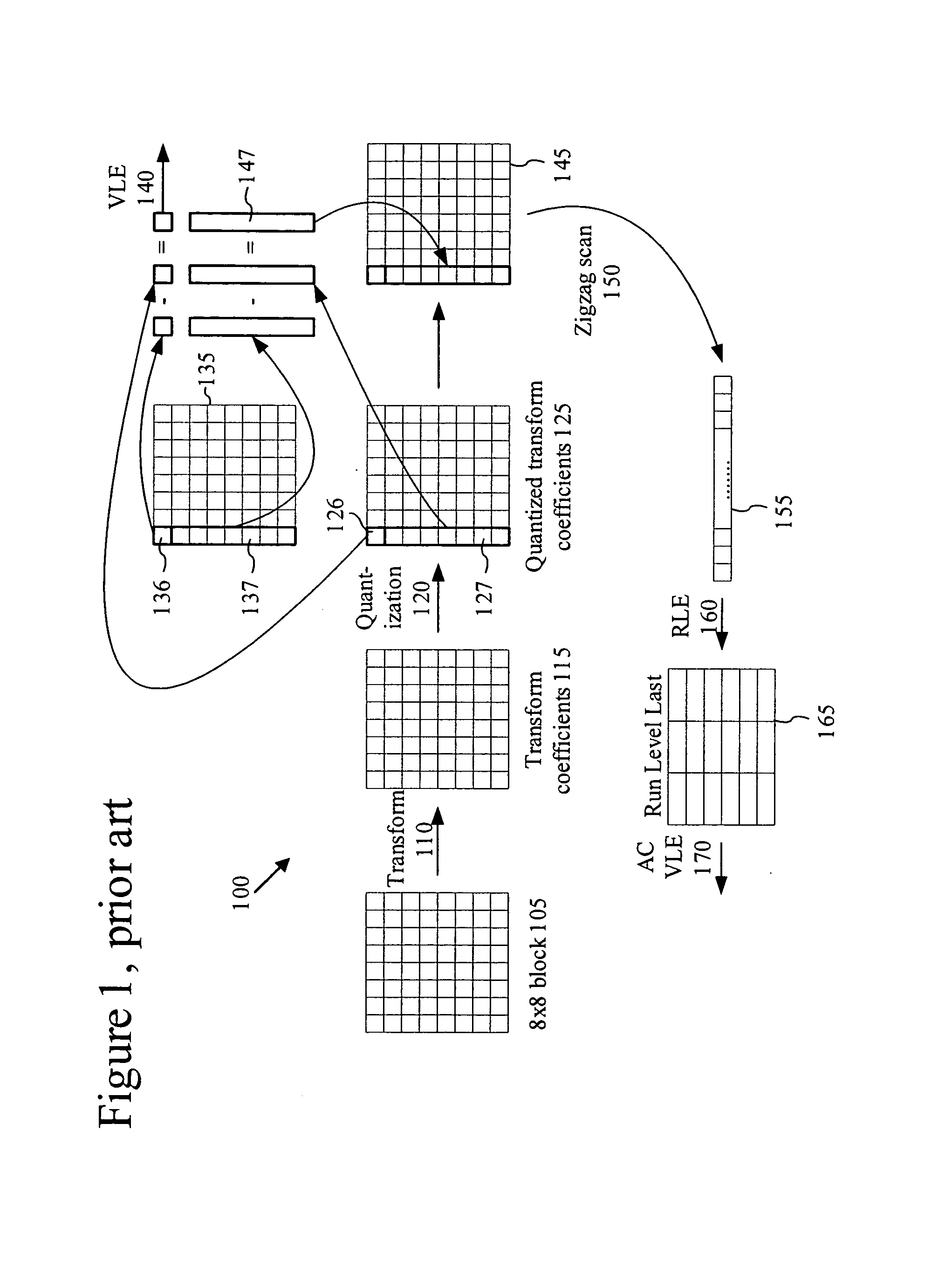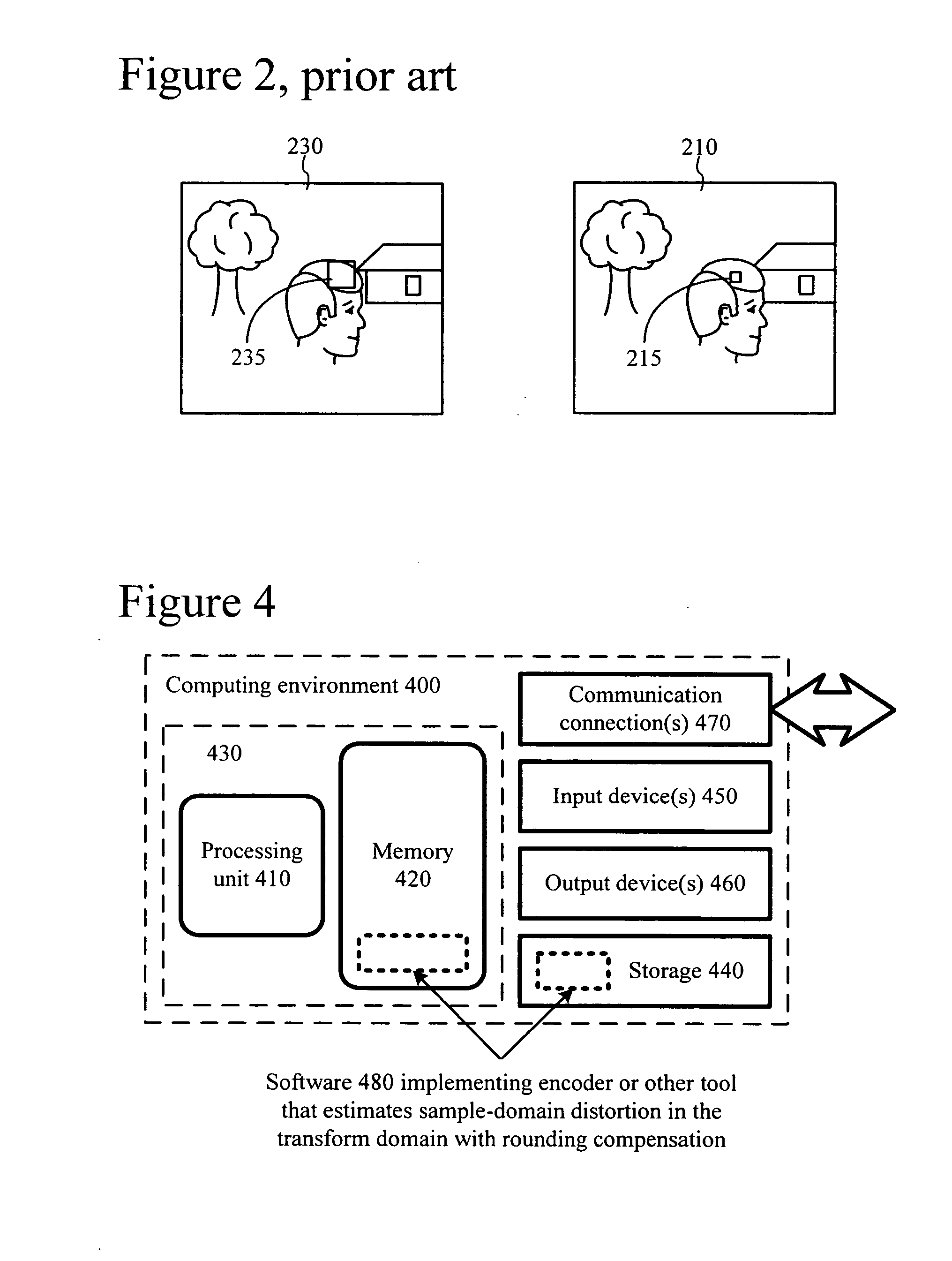Estimating sample-domain distortion in the transform domain with rounding compensation
a transform domain and distortion estimation technology, applied in the field of estimation of samples, can solve the problems of large amount of digital video storage and transmission capacity, lossless compression, and many computers and computer networks lack the resources to process raw digital video, and achieve the effect of improving the accuracy of pixel-domain distortion estimation
- Summary
- Abstract
- Description
- Claims
- Application Information
AI Technical Summary
Benefits of technology
Problems solved by technology
Method used
Image
Examples
Embodiment Construction
[0040] The present application relates to techniques and tools for estimating sample-domain distortion in the transform domain with rounding compensation. In various described embodiments, a video encoder incorporates techniques for estimating pixel-domain distortion in the transform domain with rounding compensation.
[0041] Various alternatives to the implementations described herein are possible. For example, certain techniques described with reference to flowchart diagrams can be altered by changing the ordering of stages shown in the flowcharts, by repeating or omitting certain stages, etc. The various techniques and tools described herein can be used in combination or independently. Different embodiments implement one or more of the described techniques and tools. Aside from uses in video encoding, sample-domain distortion estimation in the transform domain with rounding compensation can be used in image encoding, video transcoding, image classification, or other areas.
[0042] ...
PUM
 Login to View More
Login to View More Abstract
Description
Claims
Application Information
 Login to View More
Login to View More - R&D
- Intellectual Property
- Life Sciences
- Materials
- Tech Scout
- Unparalleled Data Quality
- Higher Quality Content
- 60% Fewer Hallucinations
Browse by: Latest US Patents, China's latest patents, Technical Efficacy Thesaurus, Application Domain, Technology Topic, Popular Technical Reports.
© 2025 PatSnap. All rights reserved.Legal|Privacy policy|Modern Slavery Act Transparency Statement|Sitemap|About US| Contact US: help@patsnap.com



